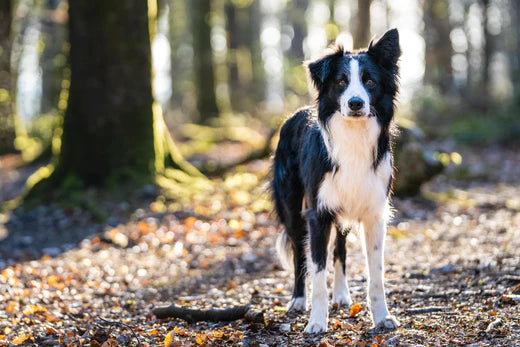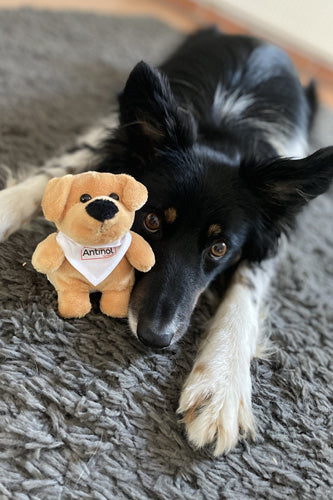The nights are long, and the evenings are cold and dark. Inevitably the winter months mean we all get less exercise. Dragging yourself out into the freezing cold just isn’t as appealing as a warm summer morning.
As with us, this drop in daily exercise in winter has an impact on our dogs too, both mentally and physically. With fewer or shorter walks, boredom can impact their mental health, and you may notice that they bark more or are destructive. Winter weight gain is also a problem, so keeping your dogs as active as possible, despite the weather, will help to keep them fit and healthy, ready for a busy summer.
What temperature is too cold to walk my dog?
As a rule of thumb, anything below -6°C is too cold for most dogs to go for anything more than a short walk—but it’s not as cut and dried at that. Every dog is different, and when you’re deciding if you should be taking your dog out in the winter weather, consider their breed, size, coat, and age.
- Some breeds, like the Alaskan Malamute, are adapted to cold temperatures, and there are many reports of them being much happier outside in the snow. But other dogs, like Boxers and Chihuahuas, aren’t suited to cold weather and will struggle even in temperatures much warmer than -6°C.
- Tiny teacup pups and other small breeds will feel the cold much quicker. In super cold weather, consider an indoor puppy pad area so that they don’t have to venture out in the cold to do their business.
- Does your dog have a thick coat? Breeds with double coats, such as Golden Retrievers or Huskies, are much better insulated from the outside world. Fine-coated dogs such as greyhounds or whippets will benefit from wearing a coat. (They look cute too!)
- Older dogs will find it harder to stay warm than younger dogs, (although very young puppies should also be protected from the cold.) Keep in mind that if your dog has joint stiffness, the cold may make them feel worse and they might need more mobility support during the winter.
5 ways to keep your dog fit in winter

If it's too cold to head outside for a long walk, here are a few indoor activities to keep your dog’s body and mind busy.
1. Indoor fetch
How often does your dog drop their ball in your lap? Go for it. Get your dog hyped up and excited for a game of indoor fetch. It’ll get them moving, and all that attention from you is brilliant mental stimulation. Take care on slippery surfaces, though. Stick to carpeted areas rather than hard floors, to avoid injury.
2. Nose work
Get your dog’s nose working. Hide their toys or a favourite treat around the house and send them off to find them. If you’ve never played scent games before, build them up, starting by finding their treat hidden in your hands or under a small easy-to-knock-over cup. As they understand the theory, you can gradually make the game more complicated.
3. Have a playdate
There is nothing better than having your friends over for a catch-up, and your dog feels the same. Invite their puppy pals over and have a warm, indoor play date. It’ll keep them mentally stimulated…and probably physically, too, as they zoom around the house together.
4. Sign up for a canine sport
Have you ever tried agility, flyball, or dock diving? Often local training classes and groups will use an indoor venue. Either purpose-built or often using community halls or equestrian facilities. In winter, these are likely to be at indoor or undercover venues. Safe from the perils of snow.
5. Build an indoor agility course
Agility is fabulous for both your dog's physical and mental health. You can build some obstacles in your living room—small jumps, tunnels, and weave poles.
Enjoy the warmer days – Get some fresh air
As long as the temperatures aren’t too cold for your dog, make sure you’re still getting outside as much as possible in winter. The stimulation from a proper daily walk is incomparable for your dog, but keep an eye on how they’re handling the weather. Do their ears and feet still feel warm? Cold extremities are a sign that their body temperature is dropping. Consider a warm, waterproof coat, and keep walks shorter but perhaps more frequent.
Nothing beats getting out on a crisp winter morning with your dog! Go for it!
Is this one up already?
This one isnt uploaded yet so we may need to link elsewhere. Chlow, do any of your contacts have educational videos for making small obstacles indoors?










